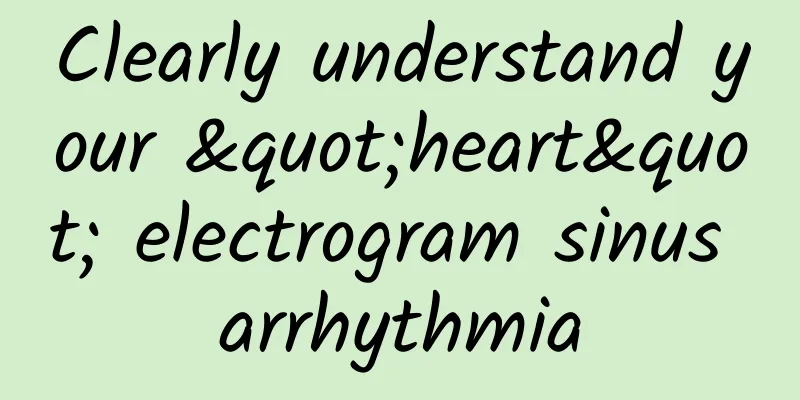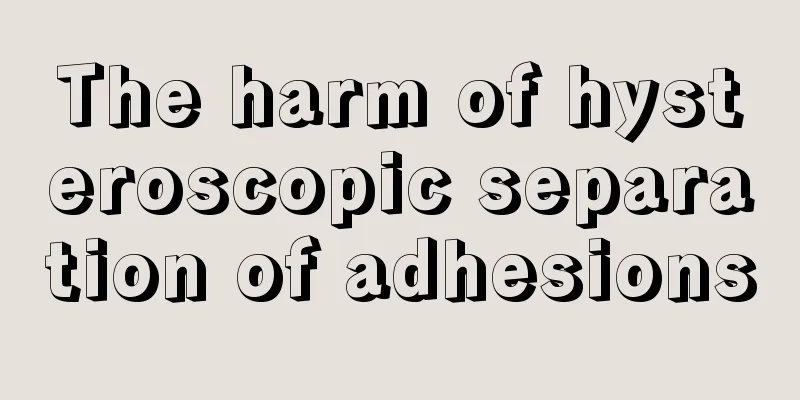Clearly understand your "heart" electrogram sinus arrhythmia

|
Sinus arrhythmia is the most common result in the electrocardiogram report of children's health check-up. Many parents and friends are very worried when they see this "irregularity", thinking that their children have serious heart disease, and they rush to consult a doctor. In fact, "sinus arrhythmia" is a paper tiger. Let's get to know it together today! Let's first look at what sinus arrhythmia looks like. Simply put, the intervals between the "spikes" on the electrocardiogram are different (as shown below), while other electrocardiogram indicators are normal. Sinus arrhythmia is named "sinus", and this sinus refers to: sinoatrial node The sinoatrial node is hidden in our right atrium. Don't underestimate it. It is the commander-in-chief of our human engine, the heart. Under normal circumstances, the sinoatrial node rhythmically sends out commands, and then transmits the signals to the atria and ventricles through a conduction path like an electric wire. Only when everyone cooperates tacitly can a heart beat. As long as the heartbeat is commanded by the sinoatrial node, we call it sinus rhythm. Sinus rhythm is usually regular, but sometimes the commander can miss the beat, which is called sinus arrhythmia. The most common type is respiratory sinus arrhythmia. How does respiratory sinus arrhythmia occur? It turns out that the sinoatrial node also has its immediate superiors, namely the vagus nerve and the sympathetic nerve. ✔When we are quiet, the sinoatrial node is dominated by the vagus nerve, and the tension of the vagus nerve is affected by breathing. When we exhale, the tension increases, which reduces the heart rate; when we inhale, the tension decreases, which speeds up the heart rate. So between our inhalation and exhalation, the heart beats faster and slower; ✔When we exercise or have a fever, the sinoatrial node is dominated by the sympathetic nerves, causing the heart rate to increase throughout the respiratory cycle. The effect of breathing on the heartbeat is not obvious, thus eliminating sinus arrhythmia. So, now everyone knows that the previous panic is all a false alarm! In most cases, sinus arrhythmia is a normal physiological variation. If the child does not have heart pain, chest tightness, palpitations and other discomforts, parents do not need to worry too much, and regular physical examinations and follow-up will be enough~ |
<<: When do walnuts mature? How and when to store walnuts
>>: What is the difference between raw walnuts and cooked walnuts? Are walnuts acidic or alkaline?
Recommend
Is it a short confinement period to take out the IUD and do curettage?
For married couples, if they are not planning to ...
How long should pregnant women breathe oxygen?
Pregnant women need a lot of oxygen and other fre...
Is the humidifier harmful to the human body? Why is the humidifier leaking from the bottom?
The humidifier industry has a history of nearly 2...
What's wrong with the vaginal discharge being a little black?
The so-called leucorrhea refers to a white, small...
Will chewing gum stick to the intestines if swallowed? Here comes the scientific truth!
Many people were scared by their parents when the...
Do you know these methods to prevent gynecological inflammation?
Women may suffer from various gynecological infla...
How long is the best time to check progesterone during pregnancy?
When we are pregnant, we need to go to the hospit...
Harvard University authoritatively releases: 19 kinds of "Best Fruits and Vegetables Ranking" to help you prevent chronic diseases!
Hello everyone, today we are going to talk about ...
What causes women's breasts to be soft?
For women, breast health is what everyone is most...
How should genital warts be treated?
Many people nowadays think that condyloma acutum ...
The chance of pregnancy with a weak positive pregnancy test
Many women who are preparing for pregnancy will c...
38 weeks pregnant, diarrhea, rumbling stomach
You must be very careful about your diet and dail...
How to use early pregnancy diagram
During pregnancy, women's bodies will have a ...
A woman has pain down there
Pain in the lower part of a woman's body is a...
What medicine can cure yellow leucorrhea quickly?
Girls are very familiar with vaginal discharge. I...









